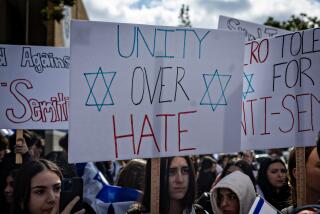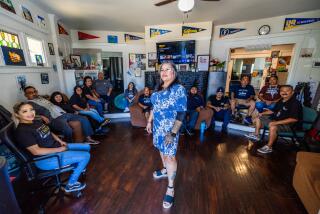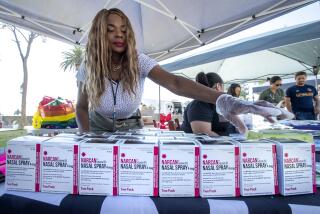Numbers Demand Action
- Share via
Raul Aguirre. Daniel Szienza. Edwin Rodriguez.
These are the names behind the numbers, three of the dozen people who have been killed by gang violence in the San Fernando Valley this year. According to police, none of these three young people was affiliated with gangs.
Aguirre, 17, a senior at Glendale’s Hoover High School, had been waiting for a bus when he saw two Armenian American boys flash gang signs and attack a Latino. For trying to stop the fight that May afternoon, he was clubbed in the face with a tire iron and stabbed in the heart.
Szienza, 16, was killed in Pacoima in June for being in the wrong place at the wrong time--in the line of fire between battling Crips and Bloods.
Rodriguez, who had just turned 18, was shot June 30 as he crouched beneath a van in a carport in Canoga Park. He died trying to escape the gunfire.
Citywide, the homicide count for the first six months of this year was up 28% over the 1999 numbers, which had marked an eight-year drop in serious crime. The sharpest increases have been in the South and Central police bureaus.
Are the numbers reason for a city already preoccupied with personal safety to panic? No. But they are cause for alarm--and a call for action.
Earlier this month, about 200 Angelenos responded to the call by marching against violence in South-Central Los Angeles. Community leaders representing South and Southeast Los Angeles held meetings attended by gang experts, clergy, parents and elected officials. On Thursday, state Sen. Adam B. Schiff (D-Burbank), along with the Glendale Unified School District and the city of Glendale, held a hearing on combating youth violence, one of dozens of meetings held in Glendale since Aguirre’s death.
Glendale residents have mobilized since the death. They’ve met in churches, community centers and school auditoriums to talk not only about gangs but about the ethnic tensions that splinter their community. Business leaders, led by City Councilmen Rafi Manoukian, who is Armenian American, and Gus Gomez, a Latino, have joined the search for solutions. The city approved hiring eight additional police officers--four to be assigned to schools, four to reactivate a disbanded gang-control unit. An anti-gang organization named an annual peace scholarship in Aguirre’s honor.
In Glendale and across Los Angeles, activists are calling for an increase in after-school programs and job training initiatives, and lamenting Gov. Gray Davis’ veto of juvenile crime prevention funding sponsored by Schiff and Assemblyman Tony Cardenas (D-Sylmar).
And across the region, residents and community leaders have taken and are continuing to take action, in ways small and large, direct and indirect.
In Sun Valley, city officials used Proposition DD money to buy three ramshackle rental houses that had been used by drug dealers, prostitutes and gang members. Earlier this month, the buildings were razed, along with the graffiti, the bullet holes and the weeds.
In their place will go an expansion of the Sun Valley branch library. Instead of bullets at the corner of Vineland Avenue and Strathern Street, there will be books.
Books did not save Raul Aguirre, who was a month away from graduating from high school when he was killed. But a community unwilling to accept violence and determined to find alternatives could save another young person. That Aguirre died trying to do just that impels us to try.
More to Read
Sign up for Essential California
The most important California stories and recommendations in your inbox every morning.
You may occasionally receive promotional content from the Los Angeles Times.










